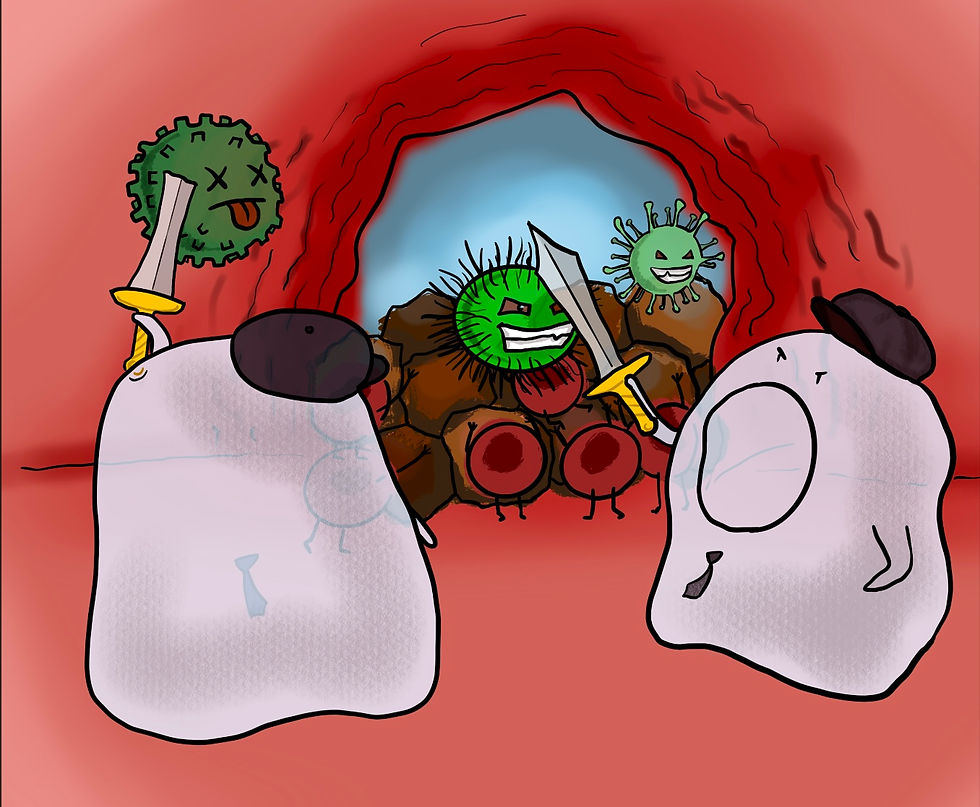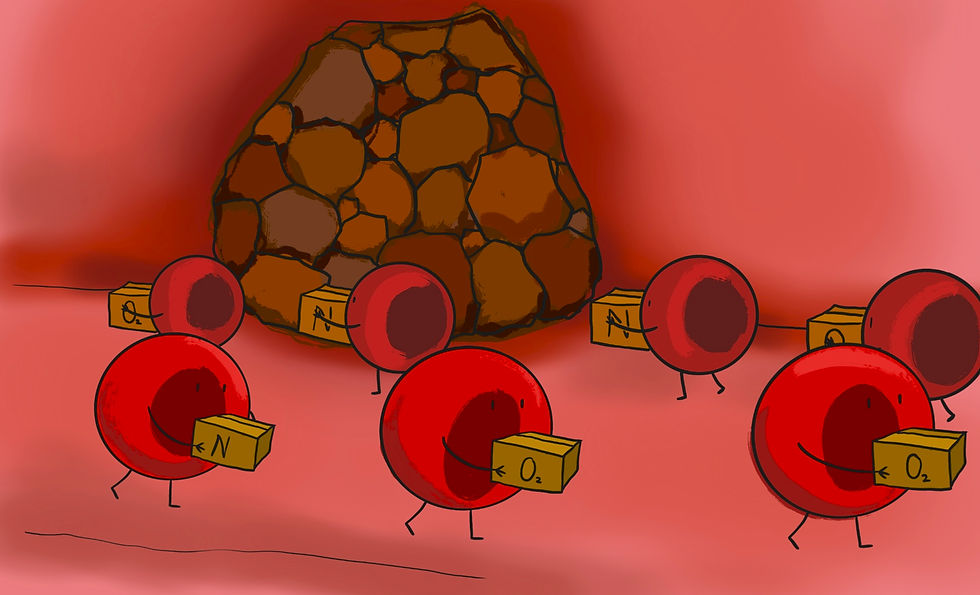Author: Daniel Zhou
Editors: Jasleen Matharu, Peggy Yang, and Yanxi Chen
Artist: Acey Li

There are many types of wounds: cuts, scrapes, puncture wounds, burns, and pressure sores. Cuts, scrapes, and puncture wounds can bleed, while burns and pressure sores don’t. Blood clots, within a few minutes or less, surround the wound area, stopping the bleeding. Blood vessels, which are narrow platelets, travel to the area, and plug the wound, thus forming a blood clot. In addition, platelets release molecules into the blood to turn on clotting factors; one such factor is fibrin, when turned on it forms a mesh that holds the platelet plug in place. After this, the blood clot dries and forms a scab, protecting the tissues underneath from germs. Once the scab forms, the wound becomes slightly swollen, and tender. Blood vessels then open around the area to allow blood to bring nutrients and oxygen to the wound, which are essential to healing. White blood cells help fight off infections and begin to heal the wound. All of this usually takes 2-5 days.

The scab falls off, and a scar forms. This formation is because the new tissue grows back differently than the original tissue, although injuries to the top layer of the skin will most likely not form a scar that deeper injuries would. The scar that forms will be smaller than the original wound and is less durable and flexible than the skin around it. Over time the scar fades away and may disappear completely, this process can take as long as two years, but some scars may never completely go away. Regardless, your body is now healed and is prepared to do so again if needed.
Citations:
“How Wounds Heal: Medlineplus Medical Encyclopedia.” Medline Plus, U.S. National Library of
Medicine, https://medlineplus.gov/ency/patientinstructions/000741.htm.
“How Does Blood Clot?” National Heart Lung and Blood Institute, U.S. Department of Health and
Human Services, https://www.nhlbi.nih.gov/health/clotting-disorders/how-blood-
clots#:~:text=The%20blood%20clot%20forms.&text=When%20there%20is%20an%20injury,is%20called%20a%20fibrin%20clot.
Comments